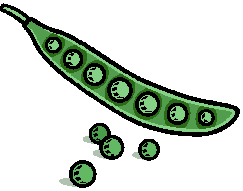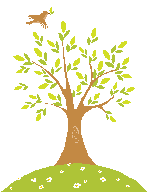Classification

Everything has a group to call their own...
The classification of the Pisum sativum is as follows:
Domain: Eukarya:
it is a eukaryote; the cells contain a nucleus and the organism is multicellular
Kingdom: Plantae:
the cell consists of a cell wall, contains chloroplasts, use the
energy from the sun to convert carbon dioxide and
water the necessary sugars
Phylum: Anthophyta
these plants are the flowering plants, they are
also known as angiosperms
Class: Eudiotyledones:
means the plant is a dicotyledon
(the seed has two embryonic leaves)
Order: Fabales:
P. sativum is a food plant so it falls into this group
Family: Fabaceae:
this name is given to the family of plants known as legumes
Genius: Pisum:
garden peas, like the other members of this genus
are believed to be of European and Asian ancestry,
plants of this grouping are edible and contain
pods which encase the edible seeds/fruits
Species:
Pisum sativum:annual plants, the garden pea has a dominate
feature of white flowers with elongated, green pods
containing the edible seeds/peas, the peas are
usually eaten fresh




The Phylogenetic Tree
P. sativum is part of the family of legumes known as the IRLC or the Inverted Repeat-Lacking Clade. It is related to other legumes such as beans, lentils, peanuts, soybeans, and lima beans. Although there are many other types of legumes that are related to the garden pea. Peas, in general, can also be broken into groups such as the starchy peas and sweet peas. Starchy peas are commonly referred to as green split peas, yellow split peas, blue pea capucijners, marrowfat peas, and tall telephone peas. The sweet peas category is recognized to contain English peas, snow peas, and sugar snap peas. This tree below was created by looking at various genetics connections. The group that put the tree together was not looking at one specific characterization to develop their "Tree of Life." The basis of the tree was put together by numerous biologist and experts in their specific area. If you want to explore not only the genetic connection of the garden pea, but other organisms Check This Out!
Still interesting in learning more about garden peas...Check out the Habitat and Nutrition